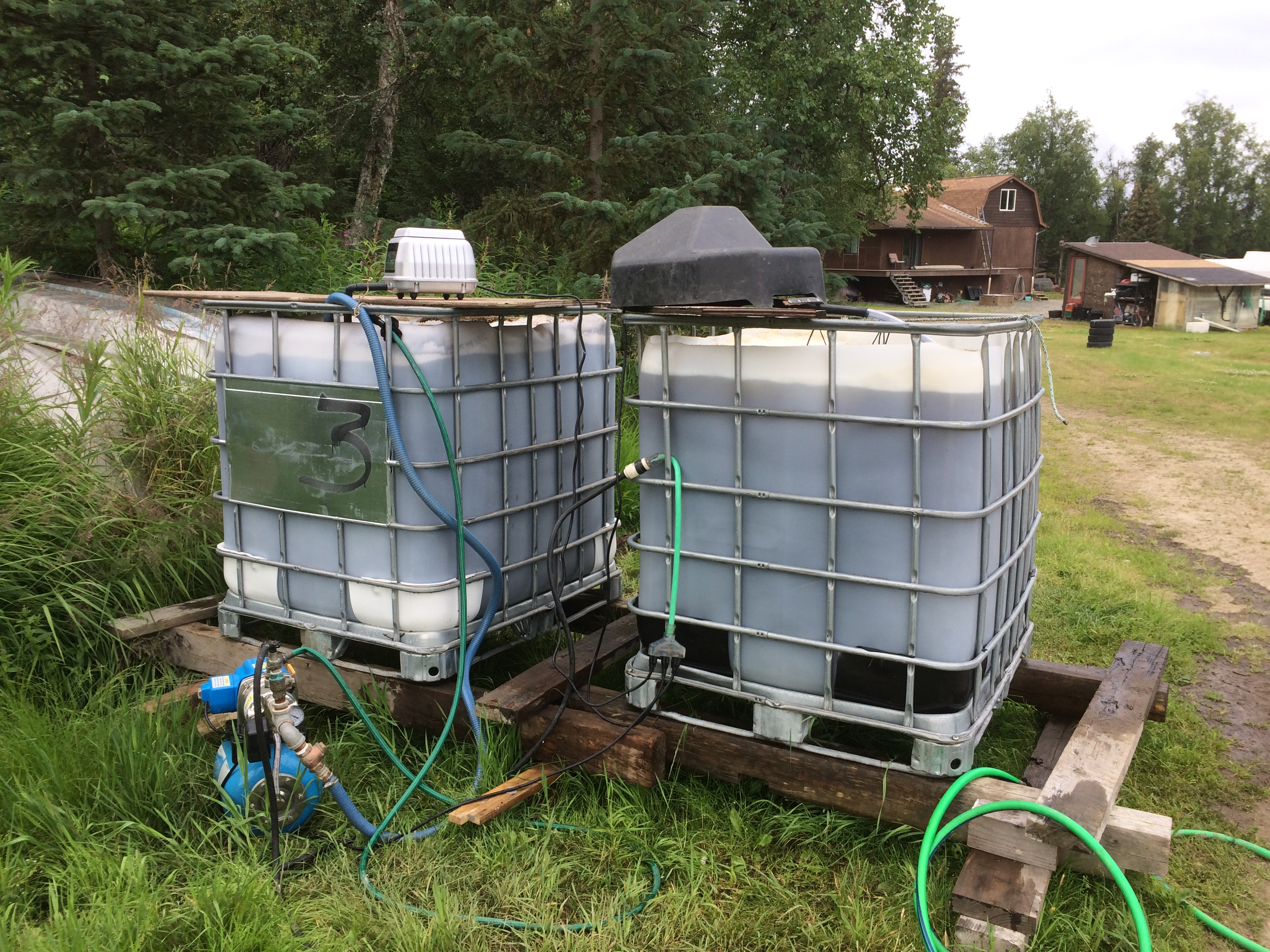Fertigation and Irrigation
March 21, 2016
Categories: Starting a New Farm
Keeping your peony fields irrigated is critical for growing large flowers. You probably would not lose all your plants if you don‘t water, but you‘d have less than acceptable flowers and the plant itself would suffer, perhaps for more than one season. Therefore another consideration about whether you can be a peony grower is, where or if I can get adequate water. How much water depends on several aspects such as where you are farming and the typical weather in your location. Along the coasts farmers usually experience more rainfall than interior Alaska.
While a steady supply of water to your fields throughout the entire growing season is ideal, the most critical time for watering is when the buds are forming and into the harvest period. The next most critical time is in late August (fall for us) when the eyes are forming for next season. It is also important to have the plants moist going into winter. In our area, that is definitely not a problem with so much fall rain.


When we had our retail garden center my Husband witched and dug us a pond. The pond has been enlarged over the years to a full sized lake. But the lake is below the peony fields. We purchased a very large tank and sunk it into the ground a few feet on an elevated area above the fields. The tank should be at least 1,000 gallons. We painted the outside of the tank black to keep algae from growing inside the tanks from sun exposure. We then ran a large water line from the lake up to the tank, added pumps and now have a gravity fed irrigation system for the two fields on the north side of the road.
It‘s important to make sure your elevation is correct for the gravity fed system. I‘m fortunate to have my son Shannon and Husband Leroy with a lifetime of construction experience. I just point and step back. If you aren‘t up to speed in this area, be sure to ask for help. The Soil and Water Conservation Service folks are always willing to help with advice on decisions such as this.
Again, we work with Drip Works for all the hook ups needed to make our systems work. We have several shut offs so we can water just a few areas at a time or all of them etc. We use our irrigation system to fertilize, called fertigation. In the past we‘ve tried compost teas Shannon mixed a tea based on what is appropriate for our farm. Scientist all say this is not successful. We are continuing to fertigate but now using a prepared professional mix similar to Miracle Grow home gardeners use. We review our soil reports and have the Peters mixed for our needs based on the soil reports. There again, seek advice if you aren‘t sure how to go about all this. The University, NRCS, Cooperative Extension, Division of Ag, and FSA are just a few of the sources available for help.


The soluble Peters is fed into the large tanks and dripped into the fields. We feel this method of fertilizing directly into the soil with water is the most efficient and the most economic method. The time it takes to turn on the system is minimal; replacing several workers who would have to do the entire field one plant at a time with dry fertilizers. Almost all amendments necessary to grow peony can be purchased in a liquid form including lime. After you‘ve worked with your system and kept tract of the evaporation and moisture in your soils, you will get a good feel for how long it takes to completely water your soils a few inches deep and how often you need to follow this procedure.
We have a similar system across the road on our larger fields. We had to build a hill for the tank to achieve the conditions for a gravity fed system. Our fields are much larger on this side of the road and required a more sophisticated scheme. But again, the operation of the system is simple and efficient.
Overhead watering can be done up to the time the buds start to form. As mentioned above that is the critical time for water needs so overhead watering is definitely not the only method you should rely. However, some folks think overhead watering during early spring growth keeps the plants cleaner. I would worry about the moistness in the foliage causing outbreaks of botrytis, especially if you have decided to plant in double rows.
Categories
- Marketing (2)
- Post Harvest (5)
- Starting a New Farm (10)
